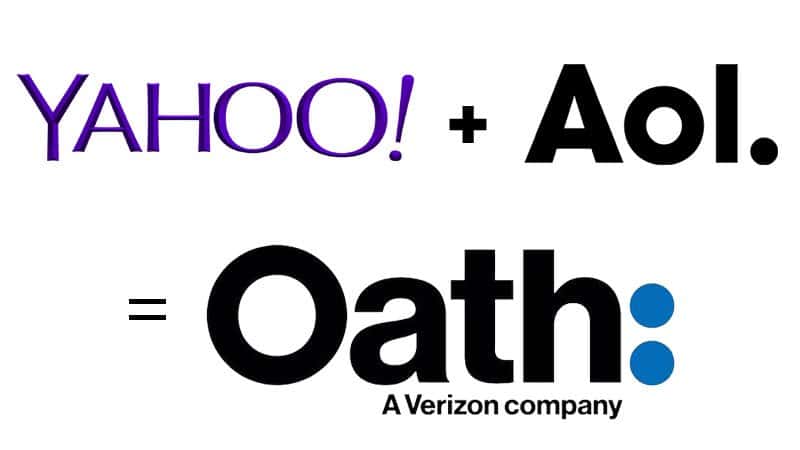Source: Bigstock

In this week’s Five on Friday, Kissmetrics shares seven simple but powerful ways to lower SaaS customer churn, Digiday offers a marketer’s guide to the new EU global data protection regulations, CFO tells us more about the revenue recognition “doomsday clock,” which is just six months away, BlogNotions gives us seven ways to improve content promotion, and CEO Marissa Mayer is out as Verizon’s $4.48 billion acquisition of Yahoo is finalized, but she walks away with a $23 million golden parachute.
7 Ways to Lower SaaS Customer Churn
Source: Bigstock

According to Kissmetrics, companies spend anywhere from five to 25 times more to acquire a customer than to keep an existing one. This means that reducing churn is a high priority in building long-term customer loyalty and, quite frankly, saving your subscription company money. Sam Thomas Davies, content marketing manager at Sleeknote, offered these seven simple but powerful ways to reduce SaaS customer churn in a recent article for Kissmetrics:
- Make your customers “sticky.” Invite subscribers to interact with your product or service as often as you can, because the more they do, the more likely they are to stick around and to recommend your company to others.
- Keep an eye on the 90-day onboarding clock. Eighty percent of all app users are likely to churn within the first 90 days. This can occur because of poor onboarding, so focus on ways to engage with your new customers to ensure they know how to integrate your product or service into their daily lives and help them celebrate small wins like activating their account.
- Get customers to pay up front. Not only do customers often receive a discount by pre-paying an annual fee, but it also reduces churn.Subscribers are finally motivated to get a return on their investment by using your product or service.
- Add a negative option. With negative option billing, customers either pay for the product or service or specifically opt out before being billed.
- Identify and reduce activity churn. Find out how many users go inactive each month and what patterns you can identify, and address churn by reaching out to inactive subscribers via email.
- Request feedback. When subscribers leave, ask them why so you can learn why someone has left your product or service. Was it you? Was it them? Could you have done something differently?
- Grow average customer spending. As churn grows, so does lost revenue. Companies can recoup some of those losses by increasing average customer spending for the customers they retain. Examples of ways to do this include upselling and offering tiered pricing where a higher cost unlocks additional features.
Read the full article and see examples and screenshots on the Kissmetrics blog.
What Marketers Need to Know about the New European Data Privacy Rules
In April 2016, the European Commission passed new data privacy laws, or General Data Protection Regulation (GDPR) to give Europeans more control over what happens to their personal data. Essentially, all companies doing business with residents of the EU must get consent from individuals before collecting their data, regardless of the company’s location.
Source: Bigstock

Companies must disclose to users what they want to use the data for, and users have the right to refuse. The deadline for compliance – May 25, 2018 – is still a year away, but Digiday says a recent study shows that nearly half of businesses will not be ready in time.
The EU defines personal data as “any information related to a natural person or ‘data subject’ that can be used to directly or indirectly identify the person.” This includes photos, an email address, bank details, social media posts, medical information, IP addresses and cookies.
Here are some key takeaways offered by Digiday in a recent article:
- The maximum fine for violating GDPR is 20 million ($22.5 million), or up to 4 percent of global revenue, whichever is higher. Regulators intend to go after big brands to force businesses to comply.
- The definition of personal data includes IP addresses and cookies. Companies will need to get individual consent before collecting cookies from a user.
- Advertisers must get explicit and informed consent from residents of the EU before collecting their data, or attempt to get implied consent.
- Regardless of their location, marketers have a greater responsibility to protect user privacy.
- The rules apply to both data processors and data controllers.
“Reconnecting with your database is the most important single consideration in the run-up to GDPR,” advised Zach Thornton, the DMA’s public affairs manager, in the Digiday article. “Marketers will need to reconnect with their customers and ensure that their consent statements or other ways they have collected personal data will be compliant under GDPR.”
Learn more about GDPR on Digiday here and here.
Revenue Recognition ‘Doomsday Clock’ Is Ticking
In another regulatory-related story, the compliance deadline for the new ASC 606 and IRFS 15 revenue recognition rules is just six months away, starting with fiscal years that begin after Dec. 15, 2017 for publicly-held companies and a year later for privately-held businesses.
According to the Financial Accounting Standards Board, or FASB, the objective of the new guidance is “to establish the principles to report useful information to users of financial statements about the nature, amount, timing and uncertainty of revenue from contracts with customers.”
In a recent article for CFO, Zuora CEO Tien Tzuo compares the coming changes to Y2K.
Source: Bigstock

“Yes, this is like Y2K, except this time you should believe the hype. It all goes down in six months,” Tzuo says.
The primary principle to understand is that companies must recognize revenue when goods and services are transferred to the customer, in an amount that is proportionate to what has been delivered. For someone in the retail world, it is easy to understand when you sold and delivered an item to a customer. The subscription world, however, is more complex because subscriptions are rolled out over time.
“For starters, subscriptions change frequently. When a company adds a few Salesforce seats, for example, contract changes are the norm. In my company’s experience, subscriptions contract undergo an average of four mid-term changes,” Tzuo writes.
In a recent study by PricewaterhouseCoopers, 75 percent of public companies surveyed were in the process of assessing the impact of the new standards, but not had not begun implementation of related changes yet. This will lead to panic for companies who don’t change swiftly enough.
“This isn’t just a back-office issue. For subscription-based companies, this has the potential to impact sales commissions, go-to-market strategies, compensation plans, product roadmaps, everything. The doomsday clock is ticking,” says Tzuo.
Read the rest of the article on CFO.com here.
7 Ways to Improve Your Content Promotion
Source: Bigstock

In a June 10 article by Francisco Perez for BlogNotions, he reminds us that creating good content is not enough. We have to make sure we promote it often and well to garner any attention. Perez offers these seven suggestions for getting your content noticed:
- Use Buffer or HootSuite to manage your social media by scheduling content ahead of time.
- Write 25 headlines for the content you plan to write, using proven methods such as “How to start ,” “10 ways to ,” etc.
- Schedule your promo. The first day your article is live promote it two or three times on social media, and promote it once each day for the next three days. Use different headlines and images each time.
- Write thoughtful social media messages, not just “check out my latest article ” to accompany the link to your content. Look at it from the readers’ perspective. What type of message would get you to click on a link?
- Use hashtags when promoting your posts, ideally two. #subscription #content
- Share your post on LinkedIn Pulse and Medium as well as your own site.
- Share your content with fellow promoters, influencers or followers who have large audiences and who might be willing to share your content too. You should get their permission before tagging them.
Read the full article on BlogNotions here.
Verizon’s Acquisition of Yahoo Closes, CEO Marissa Mayer Leaves with $23 Million Payout
Verizon has finalized its $4.48 billion acquisition of Yahoo, bringing it under the Verizon umbrella alongside AOL, and 50 media brands, reports PYNMTS.com. The new company will be called Oath and will be led by Tim Armstrong, former AOL CEO. Not surprisingly, CEO Marissa Mayer will be leaving Yahoo, but don’t feel bad for her. She resigned and is taking a $23 million payout with her.
Source: Oath

“The close of this transaction represents a critical step in growing the global scale needed for our digital media company,” said Marni Walden, Verizon president of Media and Telematics (which will include Oath), in a statement posted by TechCrunch, one of the Oath companies. “The combined set of assets across Verizon and Oath, from VR to AI, 5G to IoT, from content partnerships to originals, will create exciting new ways to captivate audiences across the globe.”
Approximately 15 percent of staff affiliated with Yahoo, probably in operations and sales and marketing, are expected.
We hope you enjoyed this week’s Five on Friday! Do you have topic ideas or suggestions for future Five on Friday columns? Do you want to hear more about SEO, content writing, compliance concerns or industry news? If so, email me at [email protected]. I’d love to hear how we can help you be more successful! Happy Father’s Day to all the dads, granddads and father figures out there!








